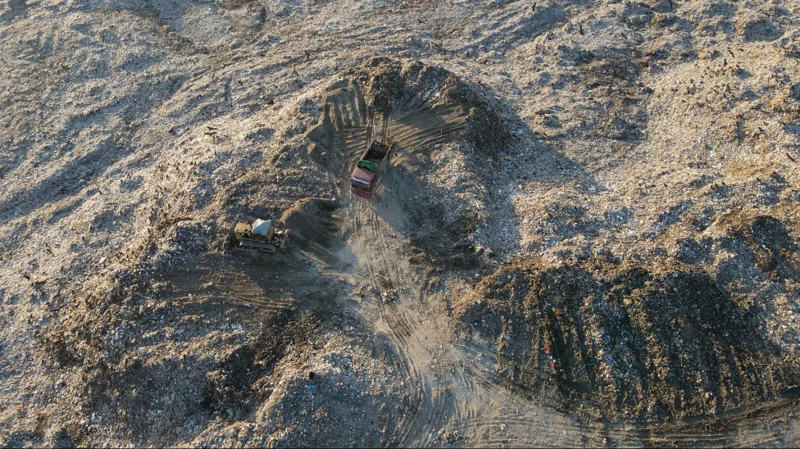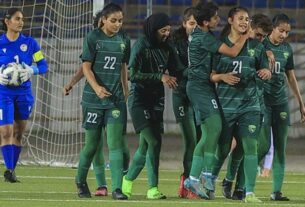Not long ago, anyone traveling on Lahore’s Ring Road would encounter an overwhelming stench, signaling their approach to Mahamood Booti Landfill Lahore. This landfill site had grown into a massive 80-foot-high garbage mountain, accumulating over 14 million tons of waste spread across 41 acres. However, beyond its unbearable odor and unsightly appearance, the real concern was the emission of dangerous gases, particularly methane, an invisible yet highly potent greenhouse gas.
Environmental Hazards of Mahamood Booti Landfill Lahore
Unlike carbon dioxide, methane poses an even greater threat to climate change. Over a 20-year period, methane can trap heat 80 times more efficiently than CO2, making it a major contributor to global warming. The Mahamood Booti Landfill Lahore became a significant source of methane emissions, worsening Lahore’s air pollution and climate impact. In 2021, satellite images revealed alarming levels of methane clouds over the landfill and the nearby Lakho Dair dump site, further raising environmental concerns.

Methane Gas Emissions and Health Risks
Reports from Bloomberg confirmed the presence of a massive methane bubble over Mahamood Booti Landfill Lahore, with emissions reaching nearly 126 metric tons per hour. According to the International Energy Agency, Pakistan ranked seventh globally in methane emissions in 2021. Beyond air pollution, the landfill site also contaminated groundwater through leachate, a toxic liquid formed when rainwater filters through waste, making underground water unfit for consumption.
The Urgent Need for Waste Management Solutions
Despite closing Mahamood Booti Landfill Lahore in 2016, authorities struggled to address the environmental hazards posed by the accumulated waste. Over time, the release of methane and leachate pollution continued to pose severe threats to public health and the ecosystem. During the smog season, air quality around the landfill further deteriorated, intensifying Lahore’s already severe air pollution crisis.

Government Initiatives for Landfill Rehabilitation
Recognizing the urgency of the situation, the Punjab government partnered with the Lahore Waste Management Company (LWMC) and Ravi Urban Development Authority to rehabilitate Mahamood Booti Landfill Lahore. The project aimed to mitigate environmental risks by covering the landfill with soil and extracting methane gas for potential commercial use. Estimated at PKR 1,400 million, the project is expected to be completed by August.
Turning Waste into Energy
The rehabilitation project involves extracting methane gas from Mahamood Booti Landfill Lahore and supplying it to nearby industries. The initiative also includes establishing an 11-acre solar park with a five-megawatt capacity, contributing to Pakistan’s renewable energy goals. Furthermore, an urban forest will be developed over 30 acres of the landfill site, enhancing Lahore’s green cover and promoting environmental sustainability.
Carbon Credits and Financial Sustainability
The funding for this project comes from private investment, supported by carbon credits, an international mechanism allowing companies to offset their carbon footprint by investing in projects that reduce greenhouse gas emissions. By transforming Mahamood Booti Landfill Lahore into an eco-friendly site, the initiative is expected to generate substantial revenue through carbon credits. Experts predict earnings between $500,000 to $1 million annually from these credits alone.
Future Implications for Lahore’s Waste Management
While the rehabilitation of Mahamood Booti Landfill Lahore is a significant step toward sustainable waste management, similar action is required for other landfill sites like Lakho Dair. Every day, Lahore generates approximately 5,000 tons of waste, much of which ends up at Lakho Dair, creating another environmental challenge. Plans are underway to apply similar landfill management strategies to control methane emissions and pollution.
Conclusion: A Sustainable Future for Lahore
The transformation of Mahamood Booti Landfill Lahore marks a crucial turning point in Lahore’s waste management strategy. By converting a hazardous landfill into a renewable energy hub, authorities are tackling climate change, reducing pollution, and creating economic opportunities. If successfully implemented, this model can serve as a blueprint for sustainable waste management across Pakistan, paving the way for a cleaner, healthier future.
With growing environmental awareness and international pressure to reduce greenhouse gas emissions, initiatives like the rehabilitation of Mahamood Booti Landfill Lahore highlight the need for innovative solutions in waste management. As Lahore continues to grow, integrating sustainable practices will be vital in ensuring a livable and environmentally responsible city for future generations.





